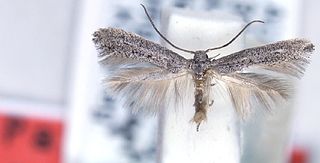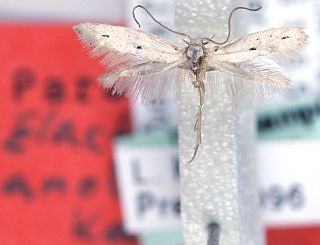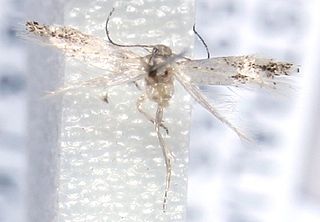Elachista evexa is a moth of the family Elachistidae. It is found in New South Wales, Australia.
Elachista crocospila is a moth of the family Elachistidae. It is found in Australia in south-eastern New South Wales.
Elachista patersoniae is a moth of the family Elachistidae. It is found in south-eastern New South Wales, Australia.
Elachista ictera is a moth of the family Elachistidae. It was described by Lauri Kaila in 2011. It is found in Australia in the Australian Capital Territory and south-eastern New South Wales.
Elachista asperae is a moth of the family Elachistidae. It is found along the coast of New South Wales, Australia.

Elachista crenatella is a moth of the family Elachistidae. It is found in the Australian state of South Australia near Adelaide and on Kangaroo Island.
Elachista eriodes is a moth of the family Elachistidae. It is found in the Australia state of New South Wales and on the Fleurieu Peninsula in South Australia.
Elachista illota is a moth of the family Elachistidae. It is found in south-western Western Australia.
Elachista ceratiola is a moth of the family Elachistidae. It is found on the Fleurieu Peninsula in South Australia.
Elachista lopadina is a moth of the family Elachistidae. It is found in south-western Western Australia.
Elachista patania is a moth of the family Elachistidae. It is found in the coastal areas of south-western Western Australia.
Elachista indigens is a moth of the family Elachistidae. It is found in the Australian state of New South Wales.
Elachista averta is a moth of the family Elachistidae. It is found in Australia in eastern New South Wales and Queensland.

Elachista anolba is a moth of the family Elachistidae. It is found in Australia in southern Tasmania.
Elachista listrionea is a moth of the family Elachistidae. It is found in the Australian state of New South Wales.
Elachista crumilla is a moth of the family Elachistidae. It is found in Australia.
Elachista ignicolor is a moth of the family Elachistidae. It is found in eastern Queensland and New South Wales, Australia.

Elachista stictifica is a moth of the family Elachistidae. It is found in Australia.
Elachista cynopa is a moth of the family Elachistidae. It is found in Australia in South Australia, Victoria, Tasmania, the Australian Capital Territory and New South Wales. The wingspan is 7.2–8.2 mm for males and 7.6–8.8 mm for females.

Elachista zophosema is a moth of the family Elachistidae that is found in Australia, where it has been recorded from higher altitudes in Tasmania.



